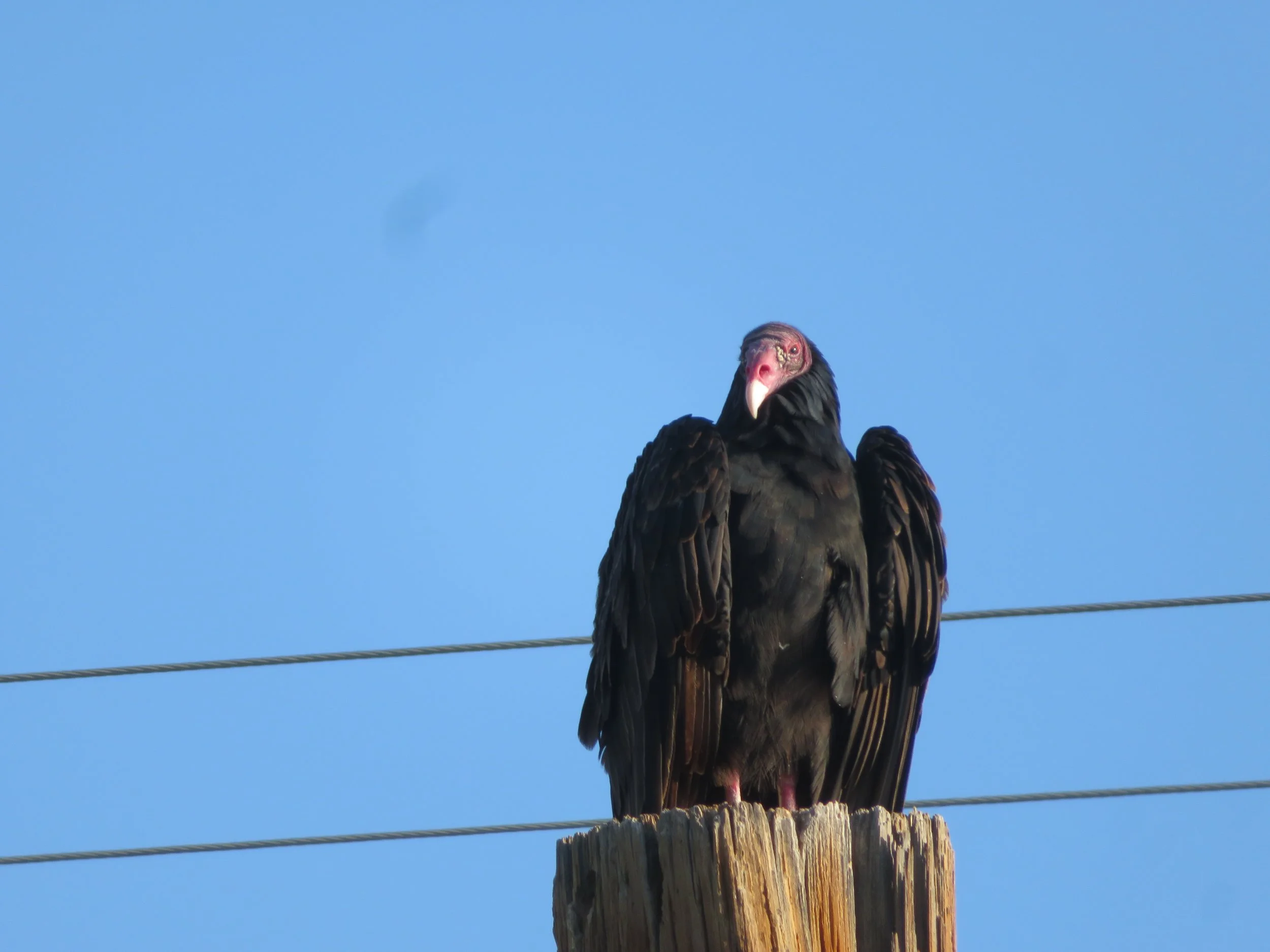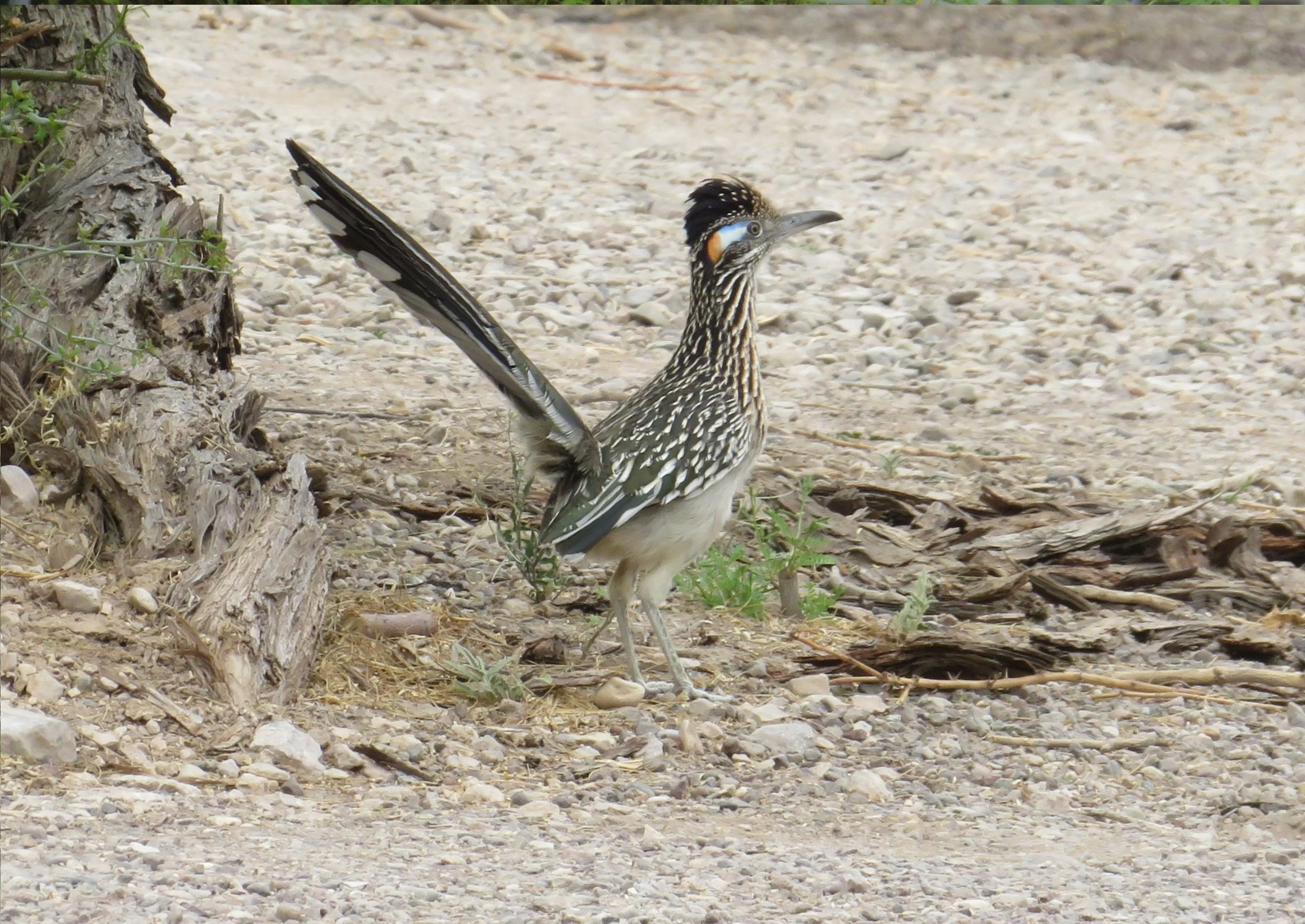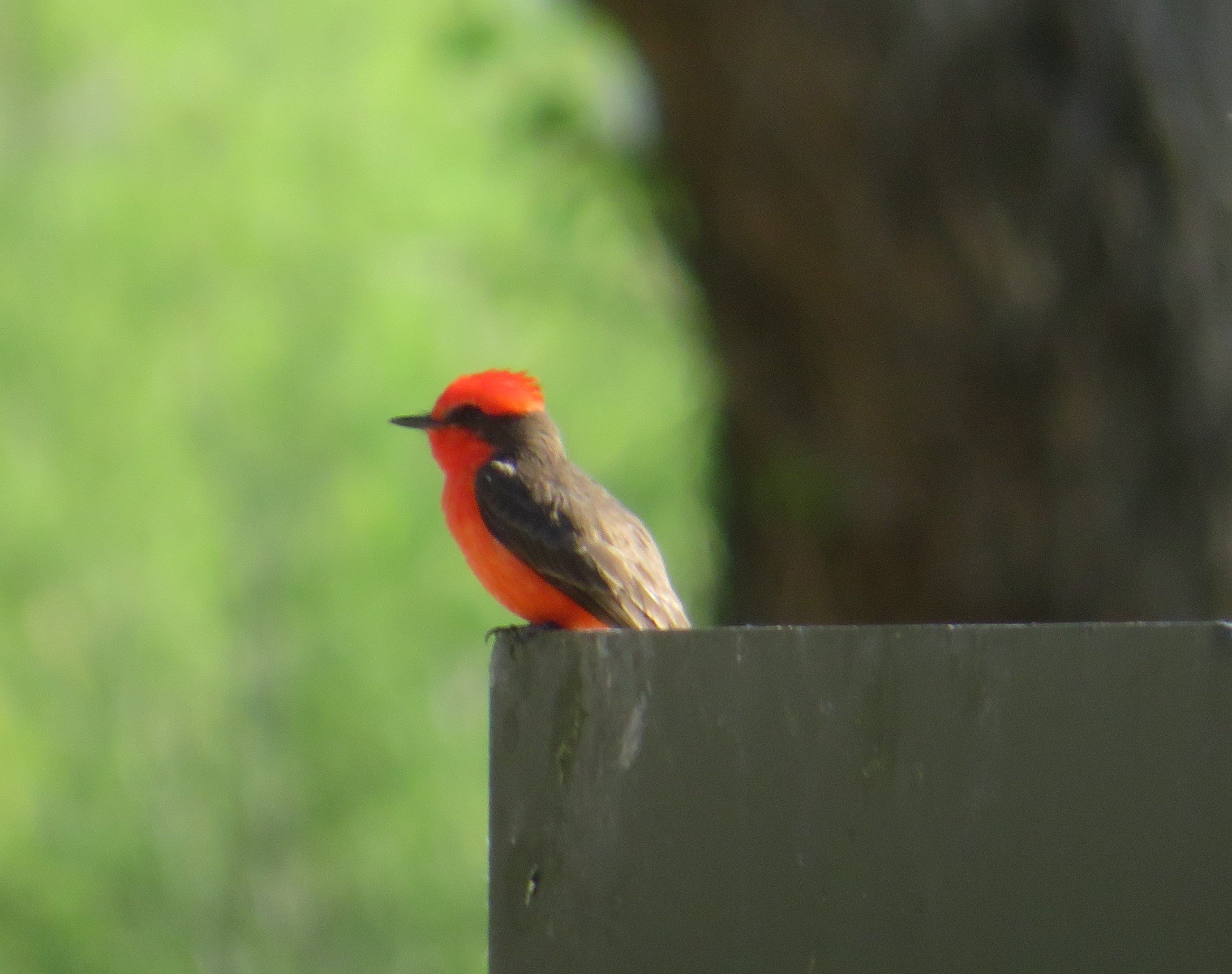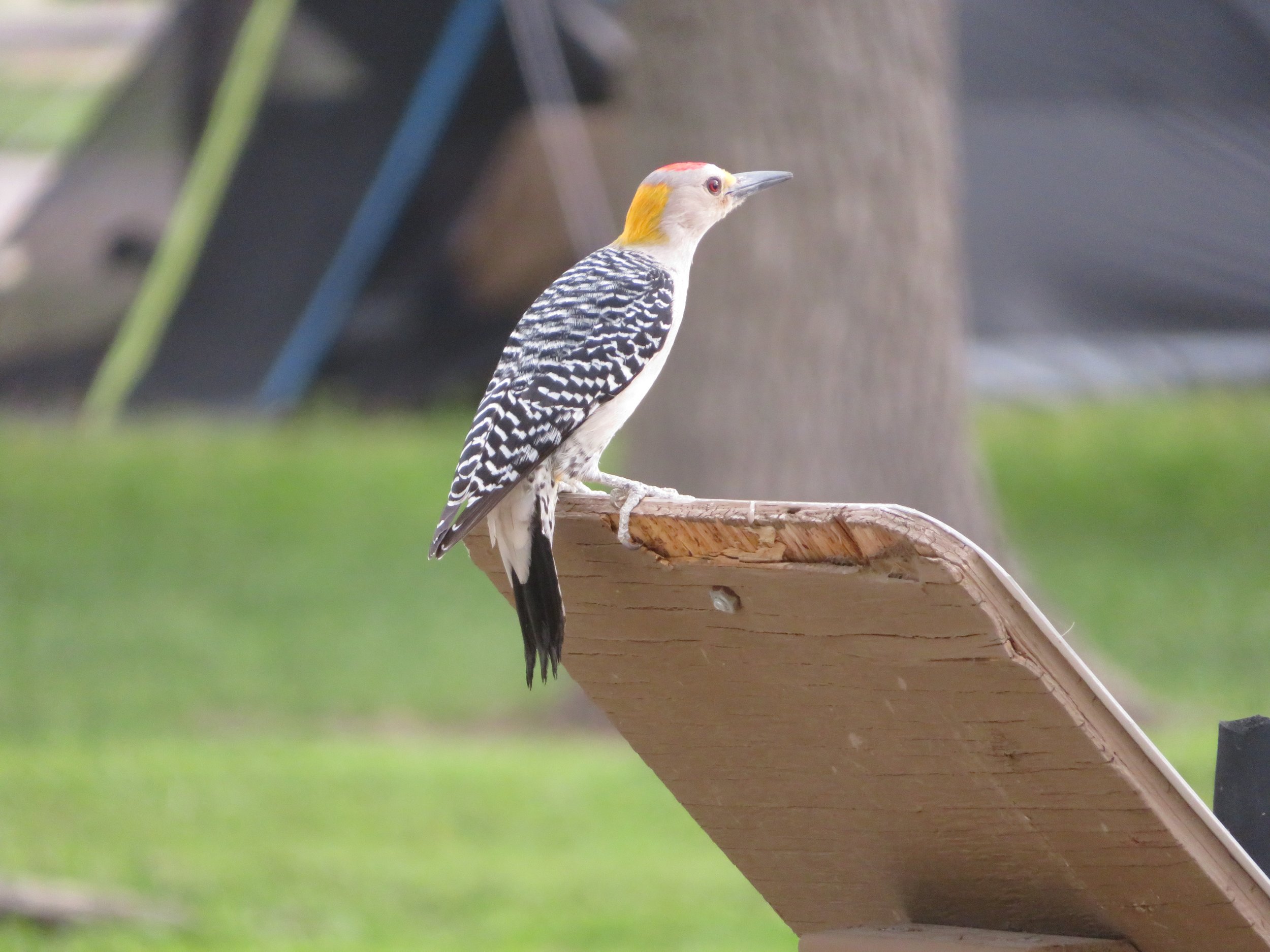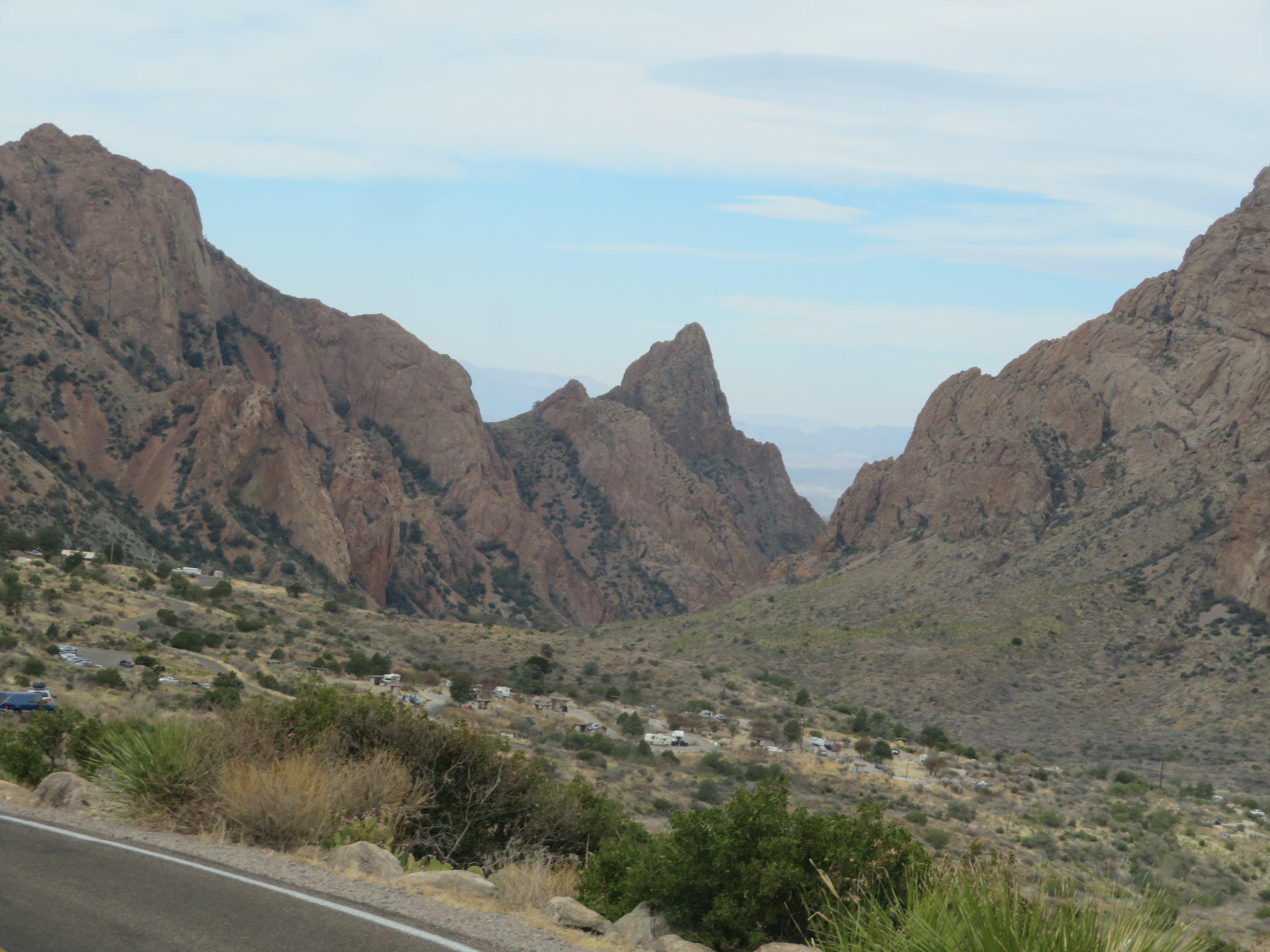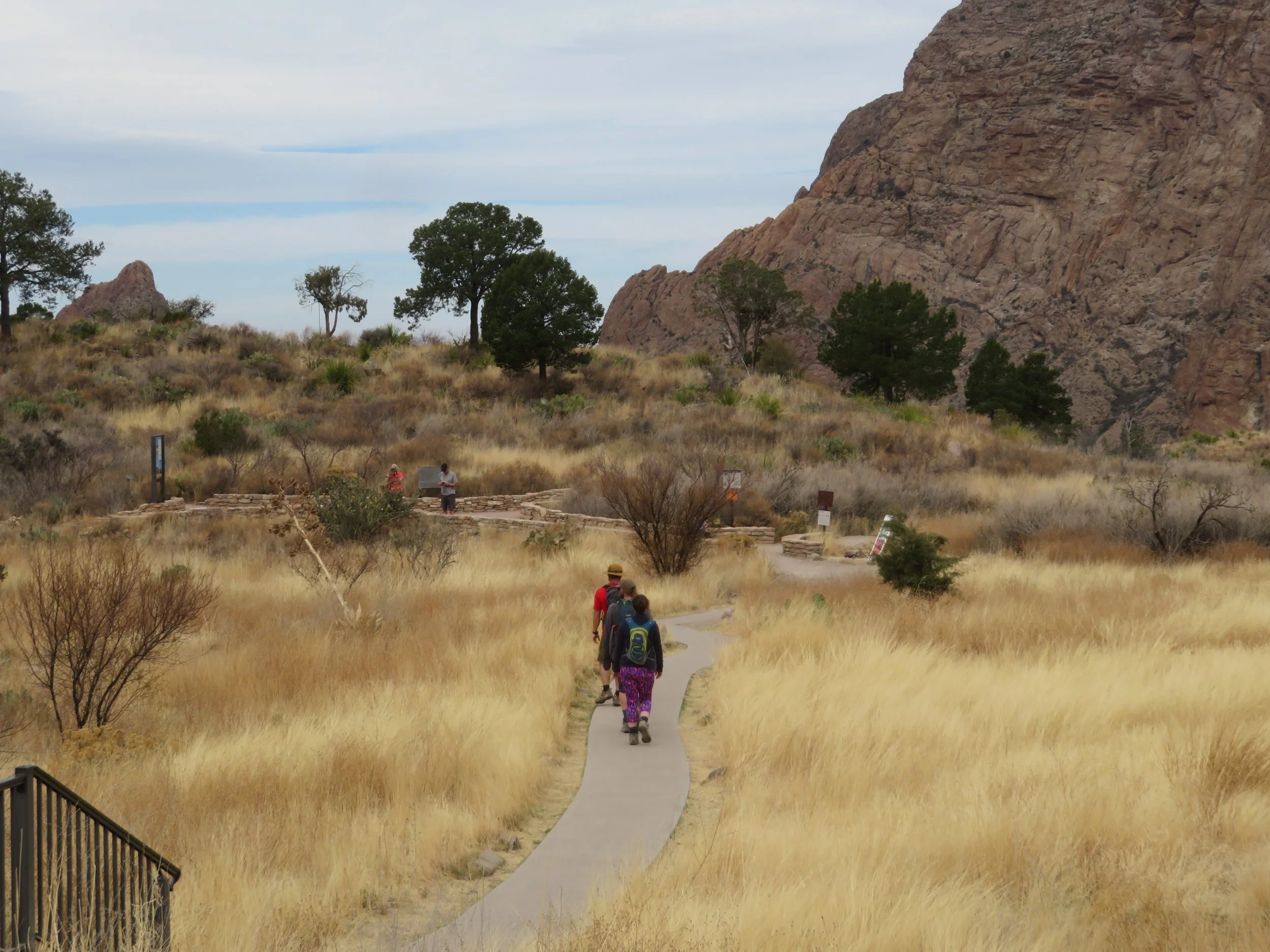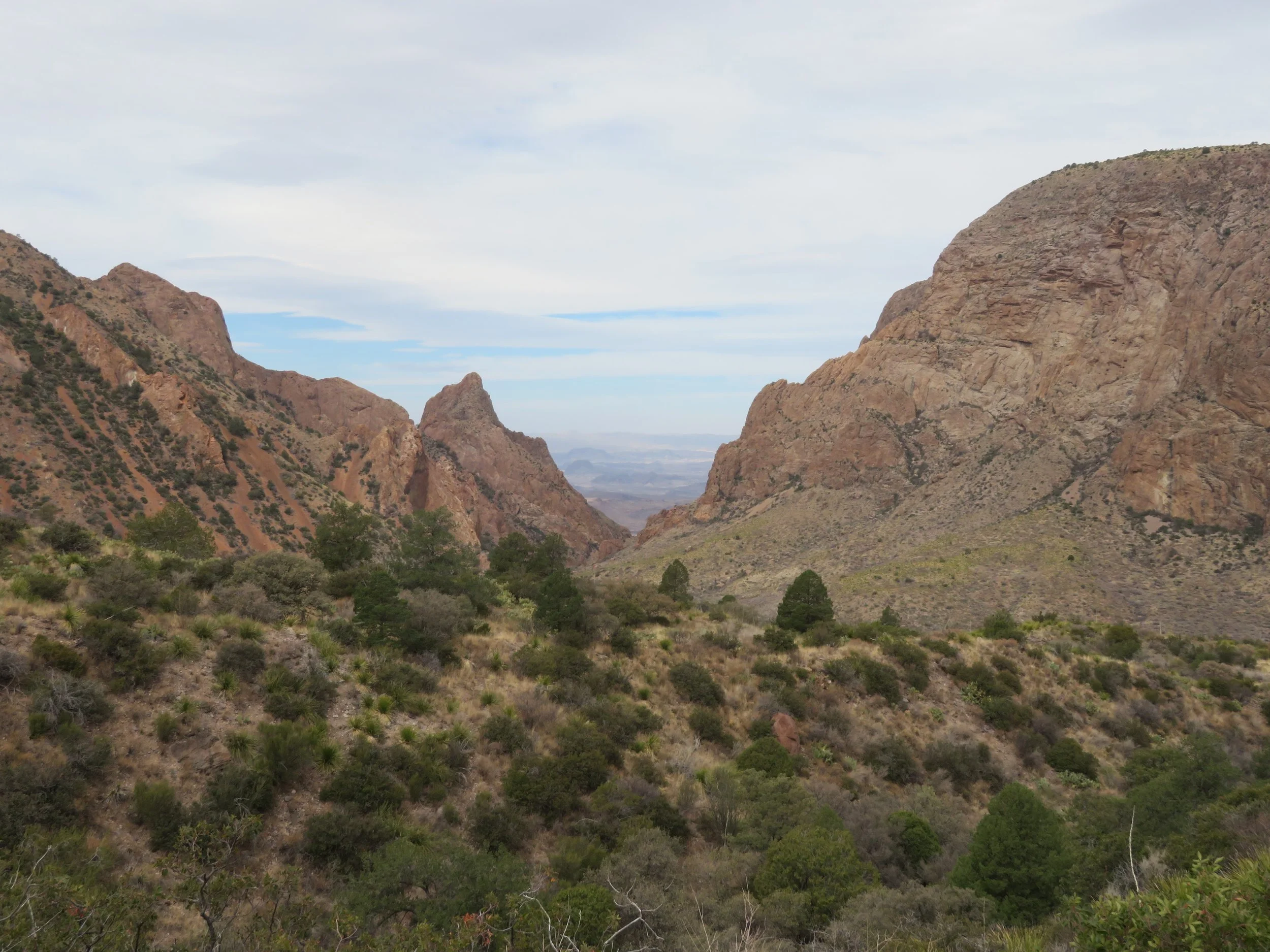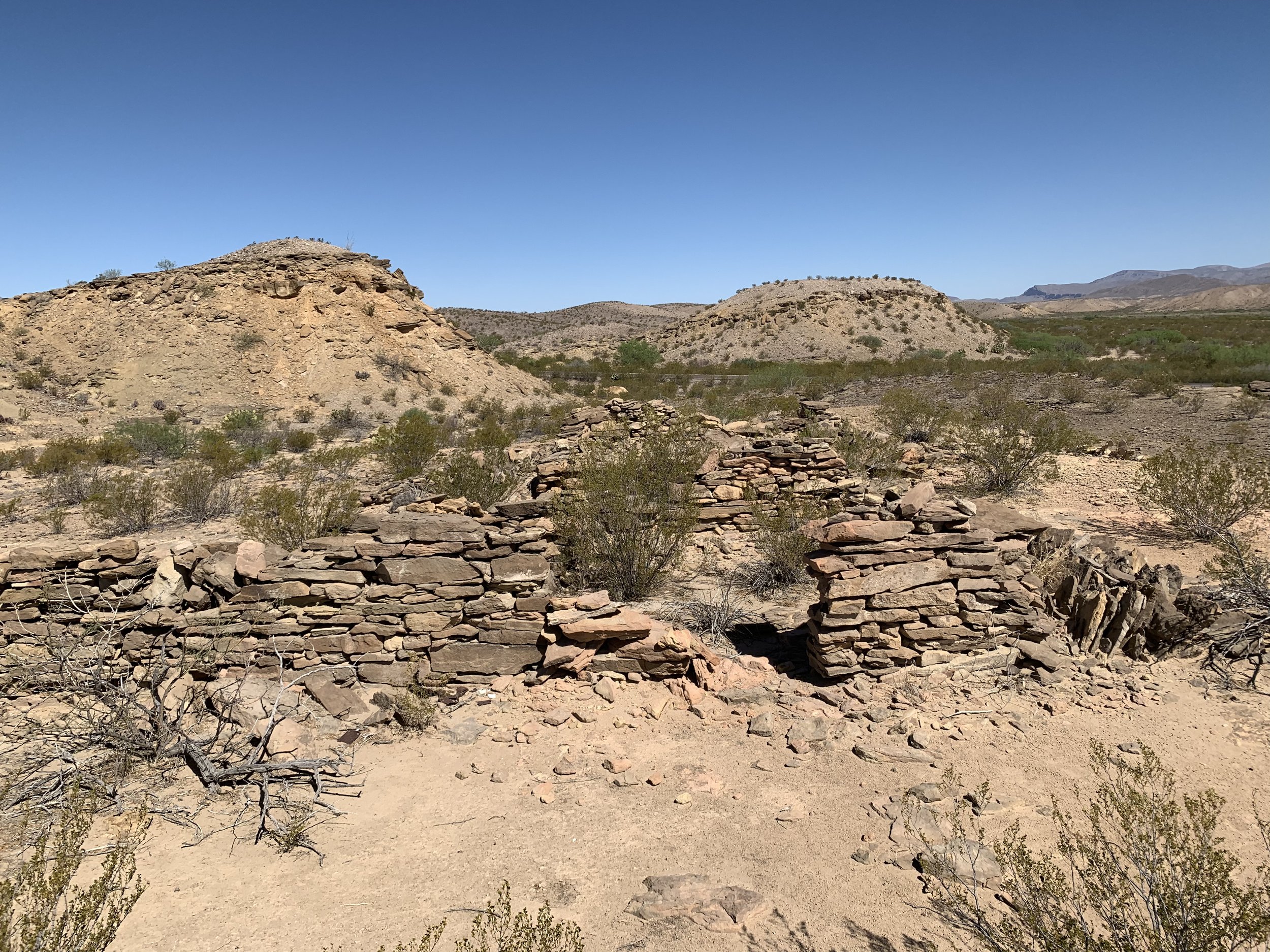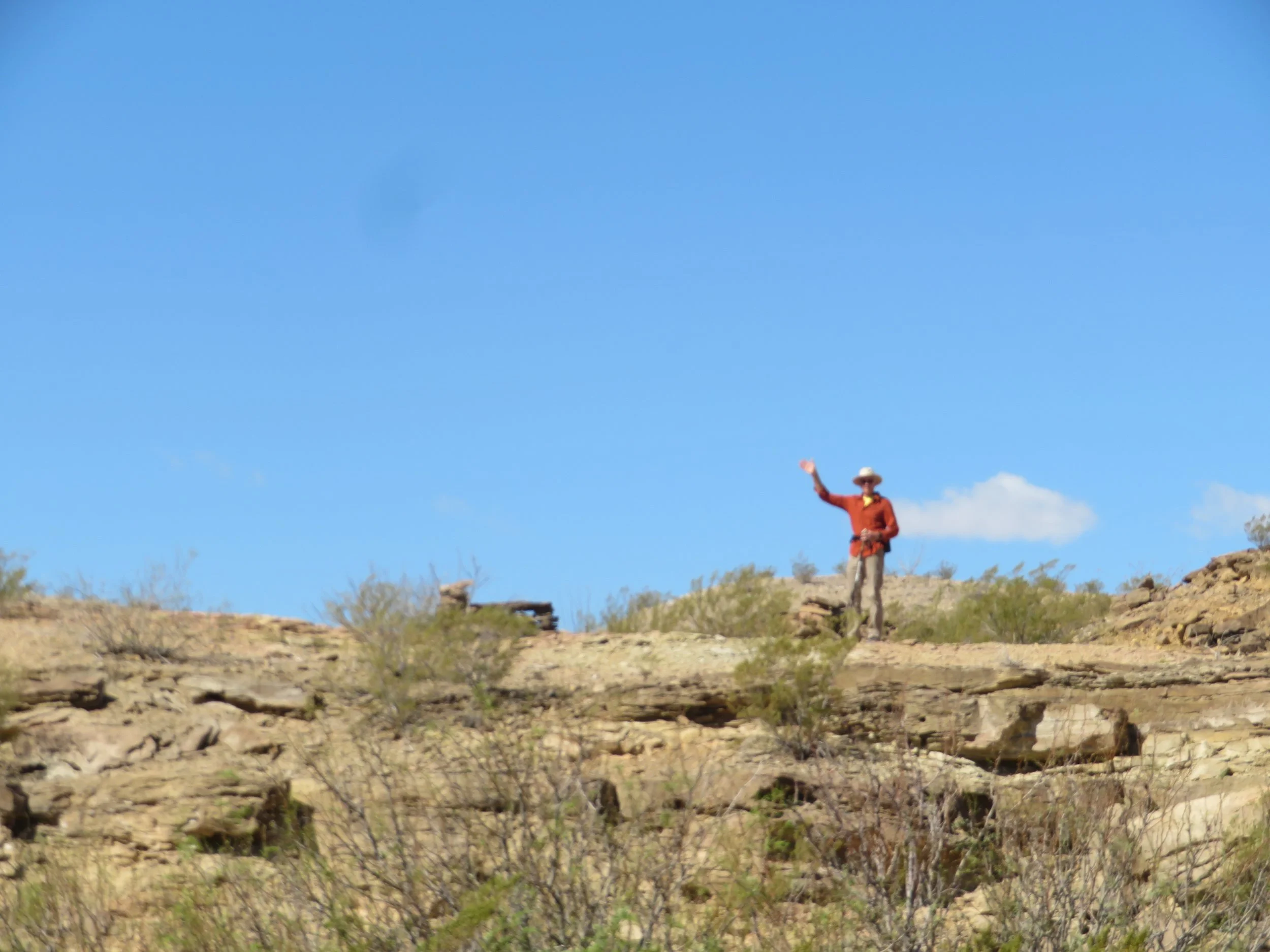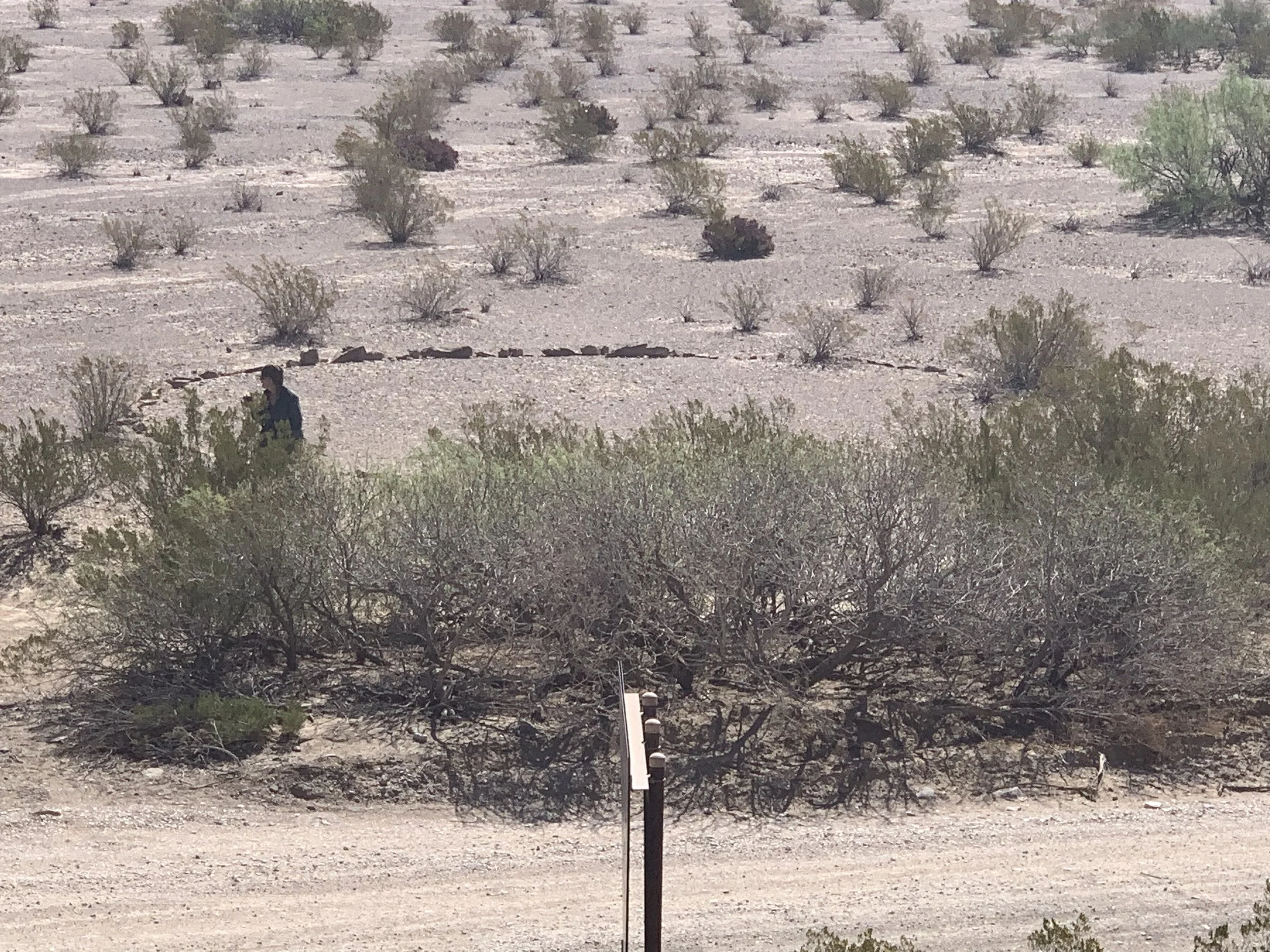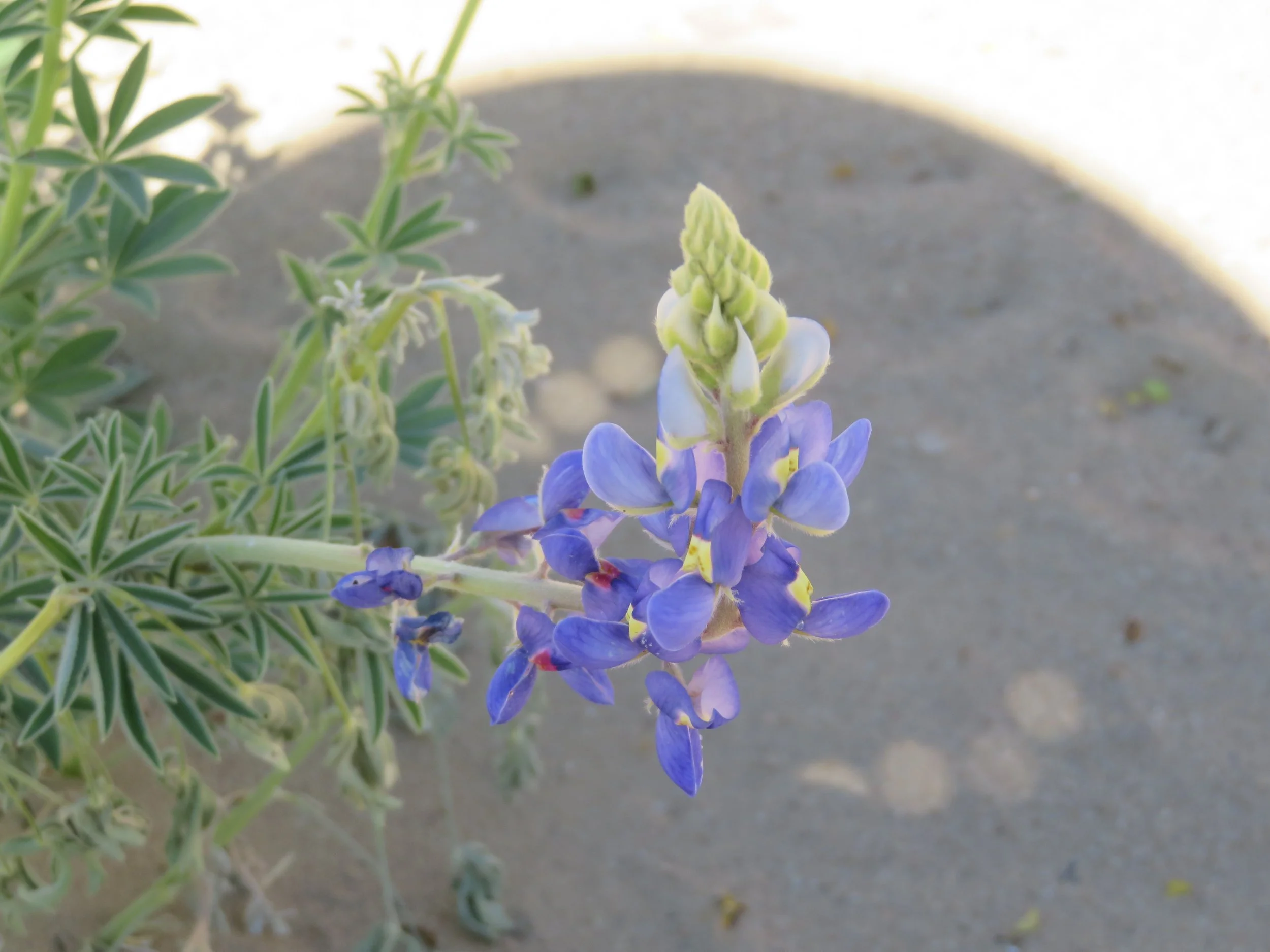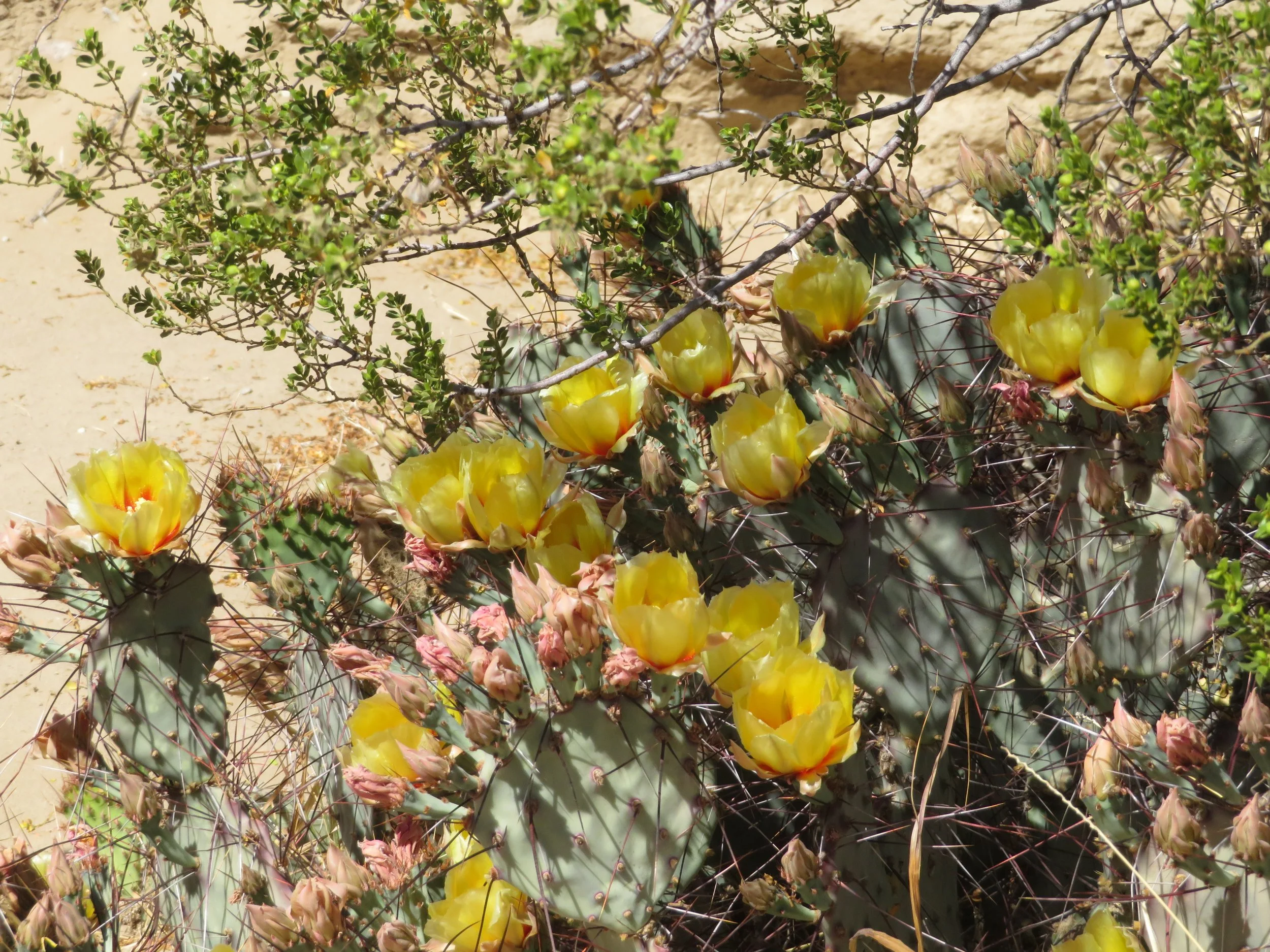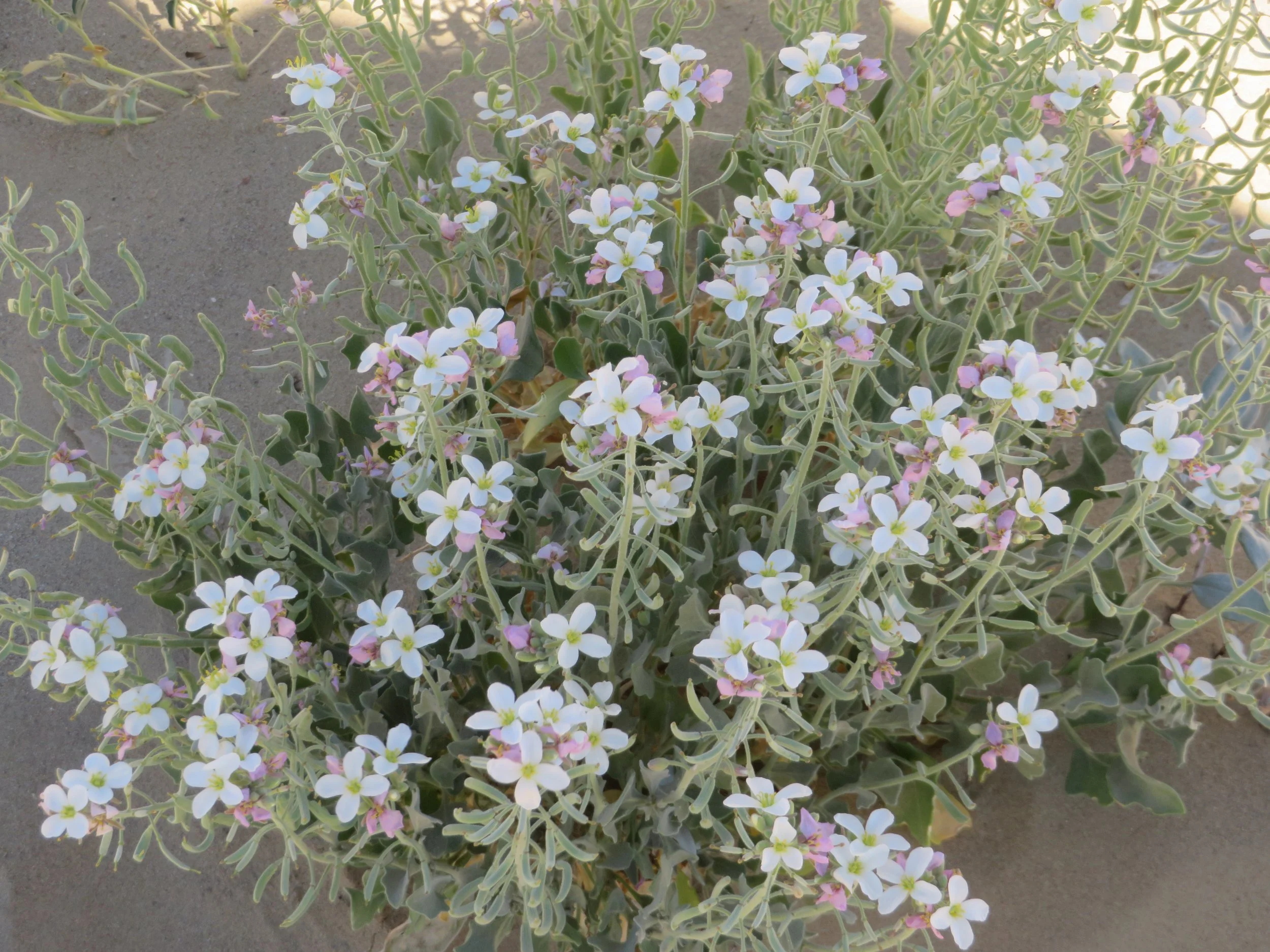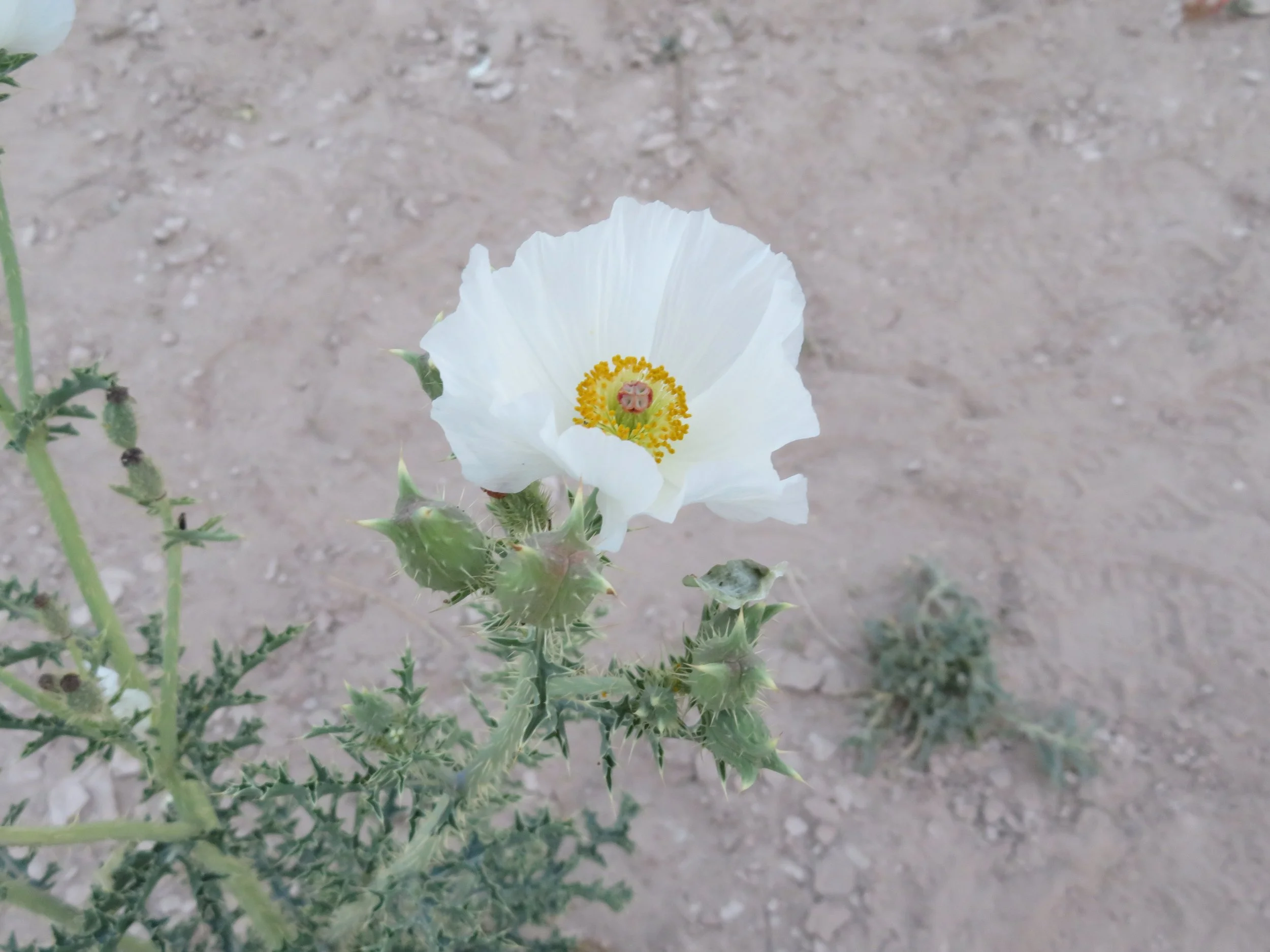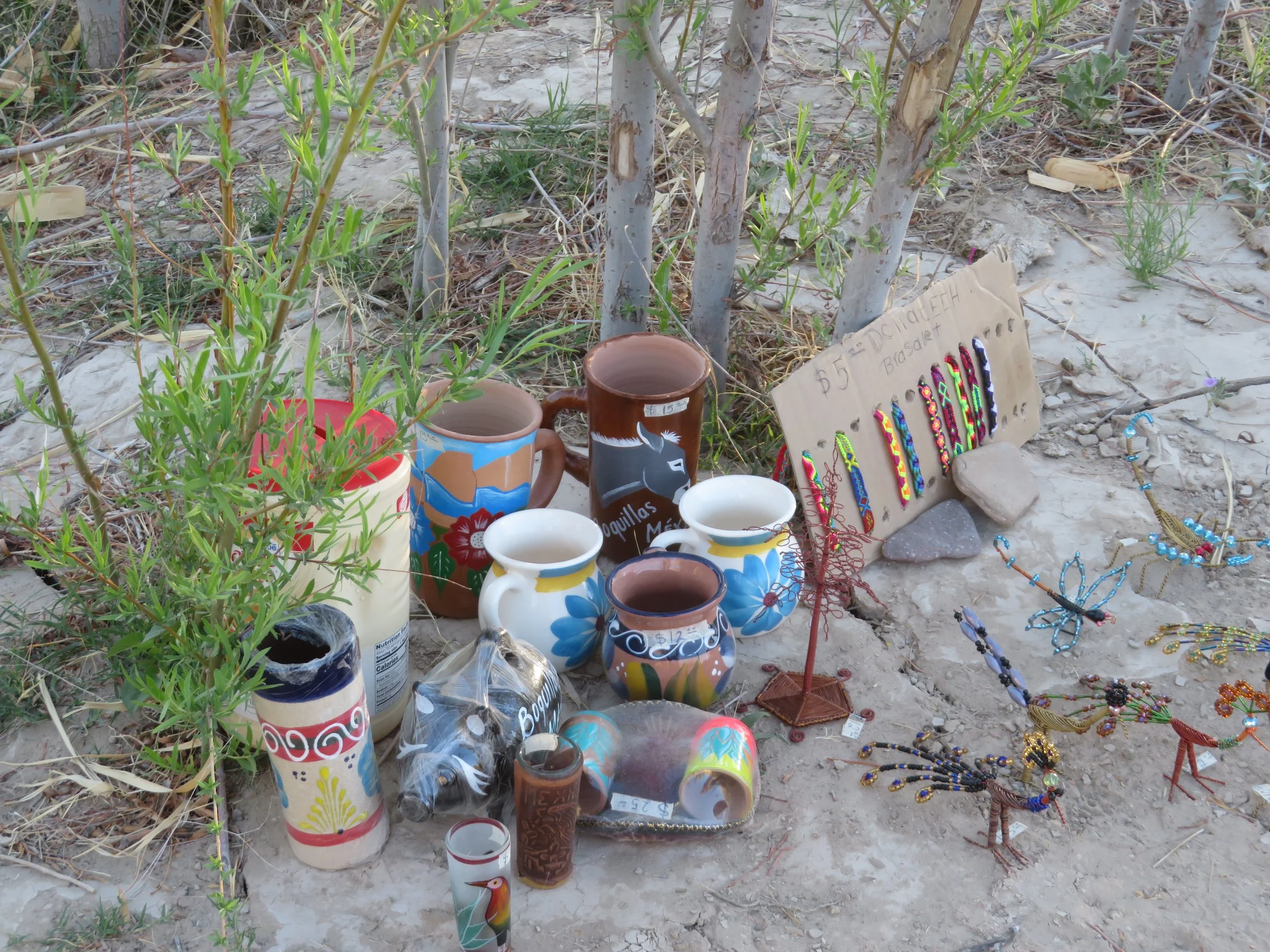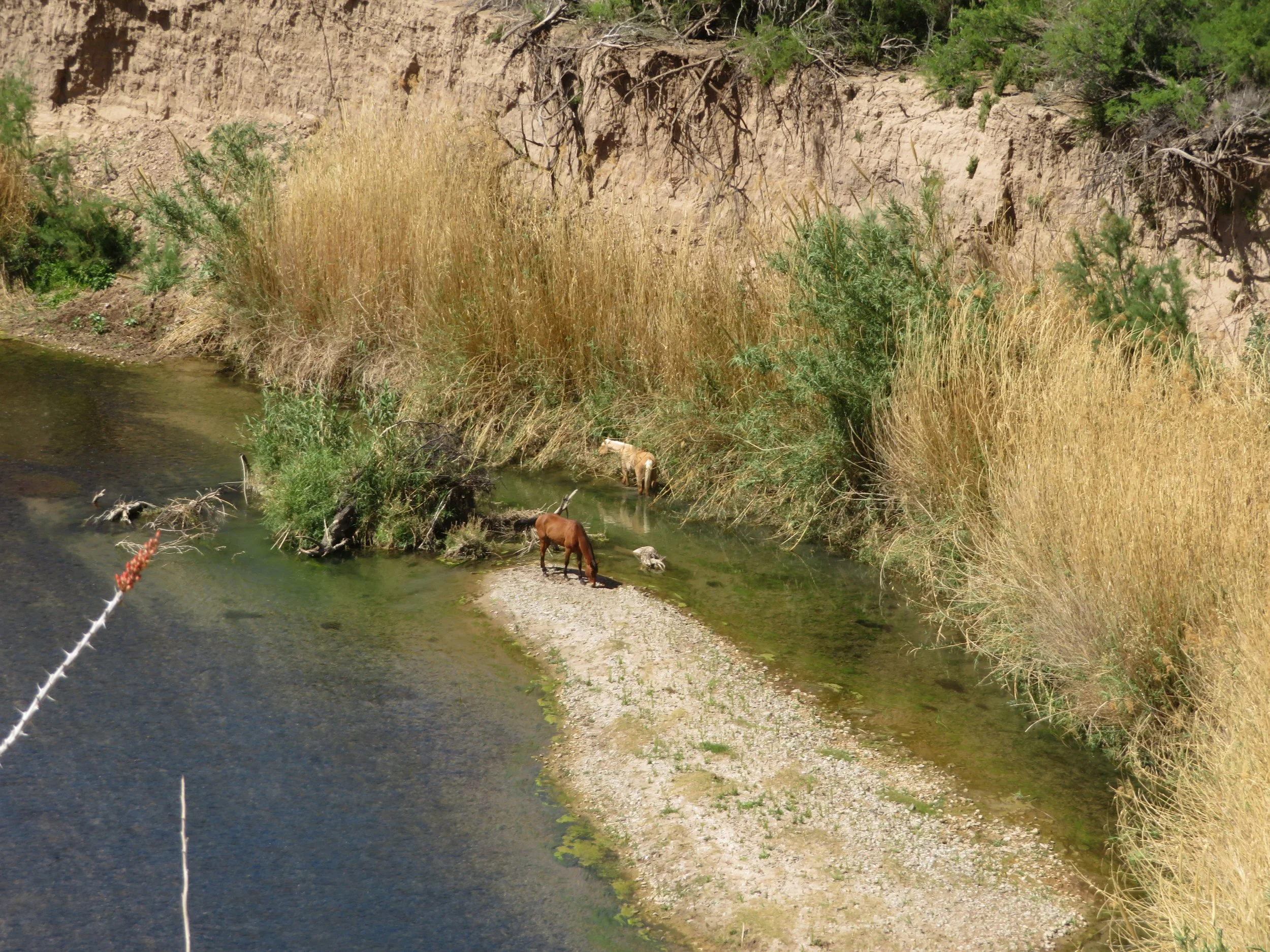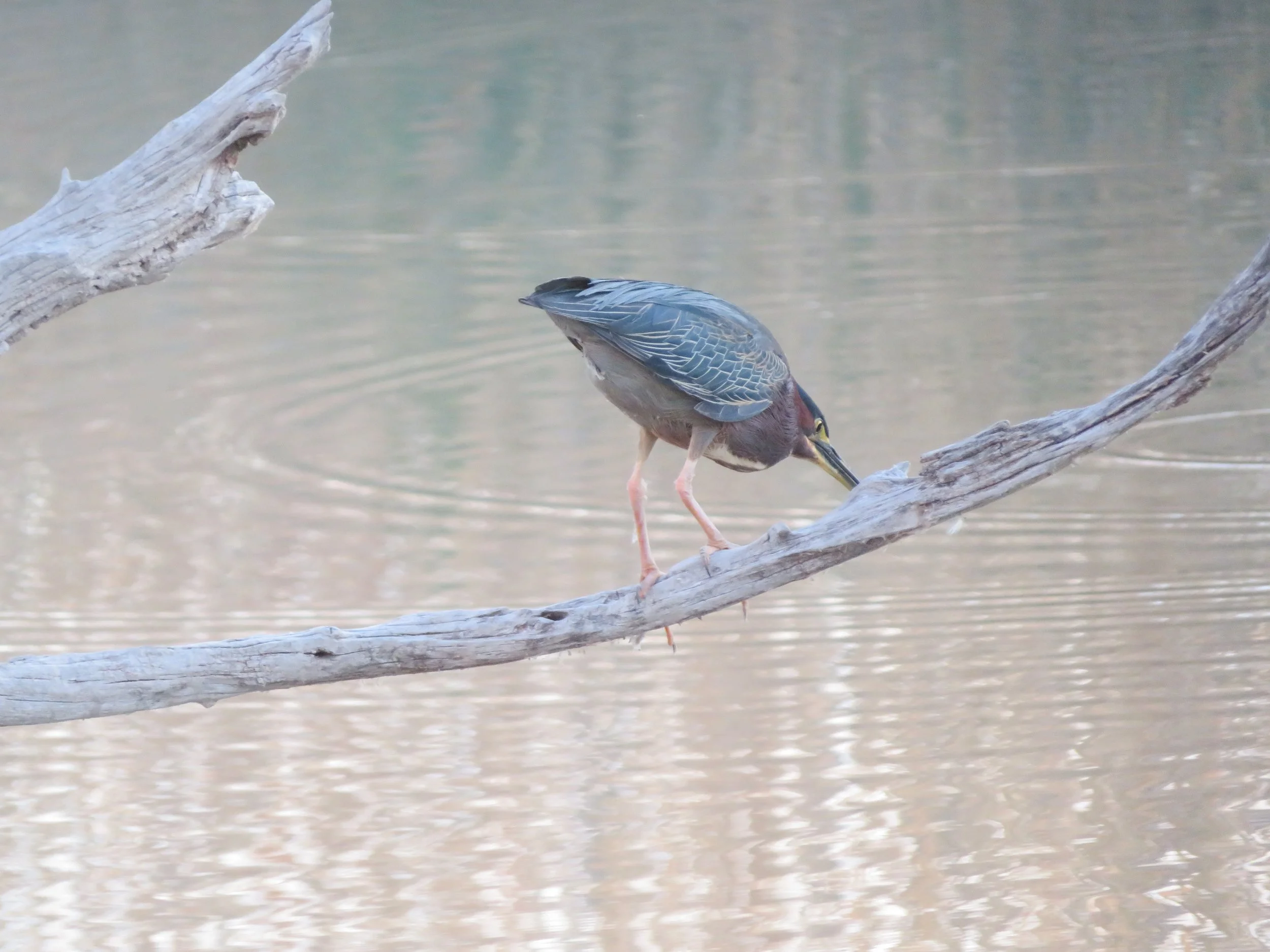Big Bend National Park - 2
/The park and campground are rich in bird life. Turkey vultures and greater roadrunners are common as you’d expect in the Chihuahuan Desert, but we saw lots of other birds that surprised us. Bright red cardinals with their distinctive color and clear song woke us each morning. We also spotted a vermillion flycatcher one day and a golden-fronted woodpecker appeared on a nearby tree… a first sighting of both of these species for us. By the way, even though we’ve seen lots of roadrunners in the past, we never noticed the distinctive red, white and blue markings on their cheeks.
There’s a bear safe at each campsite, but it’s not just for the black bears that inhabit the area. There are also mountain lions (referred to as ‘panthers’ here), coyotes and javelinas… all of which don’t mind rooting through food bins when they’re available. We didn’t see lions nor coyotes nor bears (oh, my), but javelinas were a common sight. One evening as darkness descended, we counted 16 javelina in an open space separating the campsite oval… grazing away again in Javelina-ville. Other times, we saw them trotting by on our way to the toilets or checking out empty campsites.
On a particularly hot day predicted to be 100F at Rio Grande Village, we decided to head into the Chisos Mountains to the Chisos Basin. The difference in altitude (1850’ above sea level at Rio Grande vs. 5400’ at Chisos Basin) accounted for a 15-20 degree temperature difference. We were not, however, the only folks to get this idea. The parking areas were crowded beyond capacity and there were people everywhere. We checked out the campground and were glad we’d decided to give it a pass. All campsites were on steep inclines or hillsides and we could find nary a one on the level.
We consulted the park map for several trails to hike in the area. Every single one appeared to be steep and rugged. We’re in the mountains after all. Feeling lazy, we decided on a quick 1/2 mile Window View trail. Heat or no heat, we headed back to Rio Grande Village.
We’re always reminded that the heat is not as bad in the desert. ‘It’s a dry heat. It’s not all that bad’, people always tell us about the temperatures in Las Vegas even when it’s 117F. It is indeed a dry heat, just like here in the Chihuahuan Desert, but heat is heat and dry or not, we were sweating and sticking to everything. Yuck!We settled on just a salad for dinner. We took our usual evening stroll, but evidently even the animals and birds were too hot this evening. Nothing was stirring. Even the green heron was keeping cool elsewhere and out of sight.
The wind was predicted to increase to 30-40 mph during the night and though it howled and blew without respite, it also lowered the temperature the next day by about 20 degrees which was a welcome change.
Looking for something a bit off the beaten track, we spoke with Ranger Jimmy Duke. He pointed us to the River Road to check out some newly blooming wildflowers, an old threshing circle and high on a ridge above the road, the ruins of several century-old stone houses.
David decided to find the old stone houses while I tromped through the desert looking for a patch of wildflowers. While ascending the ridge, David pointed out the old threshing circle on the ground below. From his vantage point, it was easy to see the clear, trodden ground that had been used in days of yore to thresh wheat.
Ranger Duke had given us a roughly drawn map of where the wildflowers might be hiding. We wandered a bit, and finally found the hidden cache. Blooming Big Bend bluebonnets, bluets, Mexican gold poppy and Needle leaf bluets in a kaleidoscope of color, appearing all perky and proud as if they were expecting company in sharp contrast to the desert sand and bush.
Back at camp, we ambled down the nature trail which has become the nightly ritual. Tonight we found a Chisos prickly poppy in bloom. Continuing on, the toe-dip into the river felt great.
We also saw a Mexican horseman leading two donkeys down a path and subsequently across the river into Mexico.
Here and there, strategically placed, there are small displays of handcrafted souvenirs from the little town of Boquillas across the river. All items are price-marked and coffee cans are used as honesty boxes to collect the fees. We watched as one fellow removed the cash and set new items on display. Walking sticks at $10/ea seem to be popular with tourists. The park brochure cautions visitors that these vendor sites are illegal and all purchases may be confiscated. It does not seem to deter nor discourage vendor nor patron.
The last time we visited Big Bend we took the ferry (row boat) across the river into Mexico for the day. It’s quick, easy and legal. There is a Customs/Immigration office right on the park grounds about 1/4 mile from the river just opposite the little town of Boquillas. This time we opted to give the town visit a pass, but did take a short hike into Boquillas Canyon.
It’s a short trail that ascends via a rocky, but well-worn trail to the top of a ridge for great views of the Rio Grande below. The river flowed gently here. Horses were grazing at the river’s edge.
We descended to the river flood plain. Directly across the river, a fellow was singing familiar Mexican tunes loudly and clearly. The river was barely knee-deep here. His donation box sat on the shore on our side of the river.
The green heron was in his familiar spot tonight. We watched as he successfully caught some dinner. Like a cat ready to pounce, his tail feathers would wiggle just the slightest bit as he readied to make his move. From a stone still stance, he’d dart like an arrow into the water by extending his whole body downward while his talons clung to the tree branch. In a flash, he’d snatch up his prey then straighten himself back up, swallow and resume his original position. What a show.
Regretfully, we leave Big Bend tomorrow. We’d have stayed longer, but they’re closing the campground for repaving. We haven’t figured out our next destination yet, but for sure we’ll head out of the park and then…


